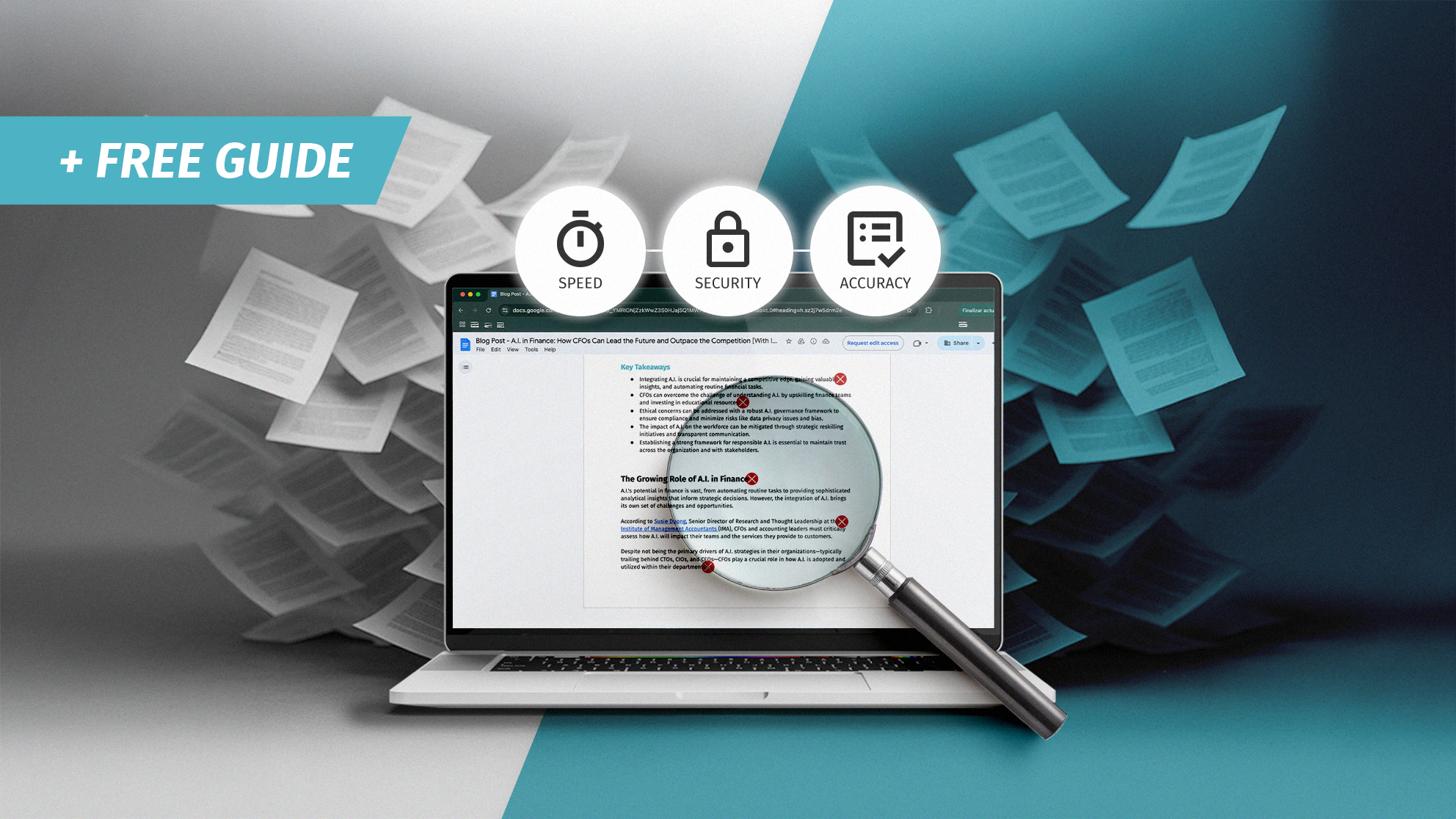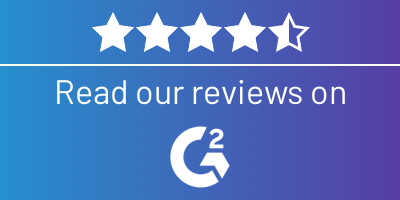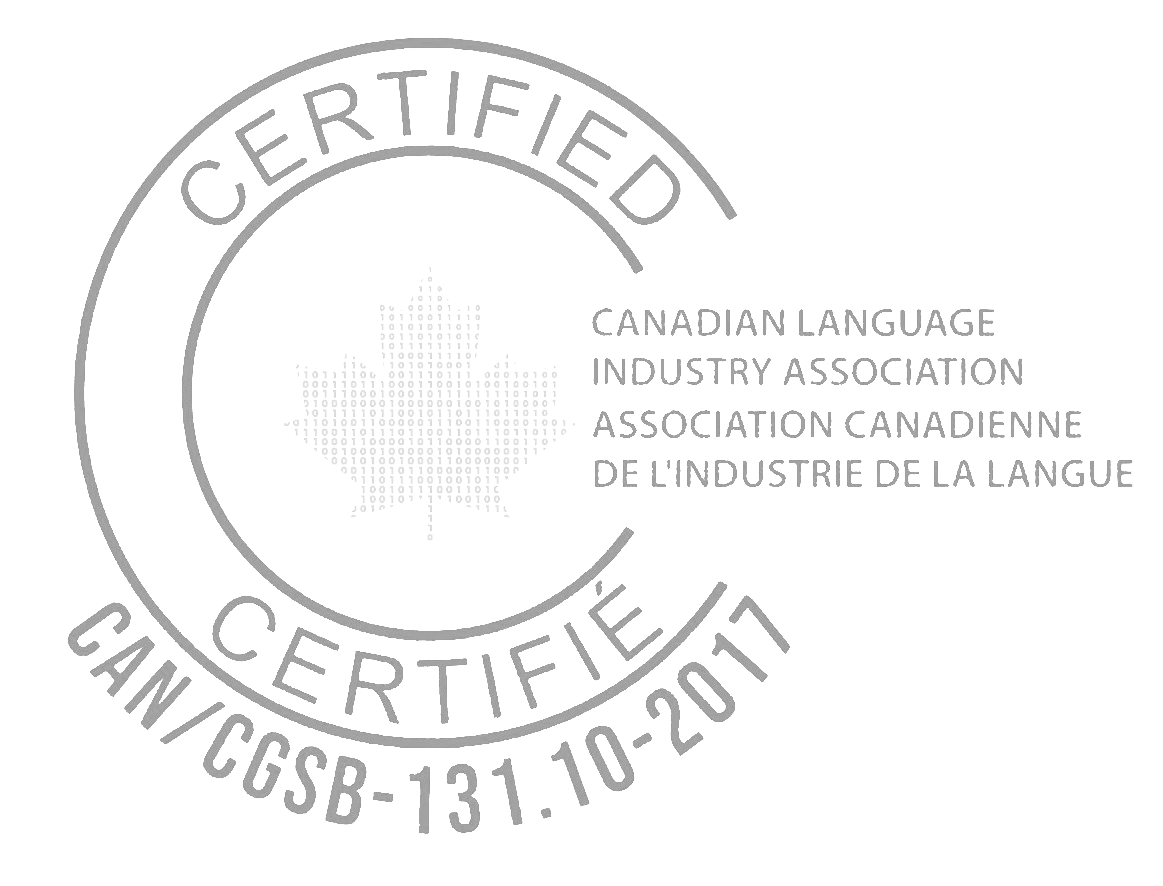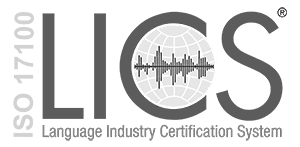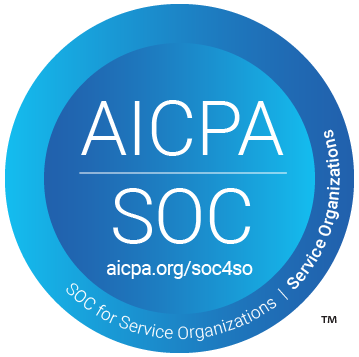Translation teams today face unprecedented demand, with more content to deliver across more channels than ever before. The organizations that thrive turn this challenge into an opportunity by applying structured workflows and enterprise-level A.I. to deliver faster, more secure, and more accurate translations.
By taking a proactive approach, leaders can not only keep pace with rising expectations but also elevate the strategic value their teams bring to the business.
- Volume and Deadlines Are Moving Faster Than Capacity
- How Can Translation Departments Scale Without Losing Quality?
- How Can A.I. Help Translation Departments Meet Compliance Guidelines?
- A Necessary Pivot to Secure, Accountable Tools
- Rebuilding Translation Workflows with Accuracy, Speed, and Security in Mind
- FAQ: What Translation Leaders Are Asking
Volume and Deadlines Are Moving Faster Than Capacity
Translation teams are managing hundreds of requests across marketing, compliance, and training, all arriving in different formats with firm deadlines. As global demand for translation services grows toward USD 71.7 billion by 2025 (Nimzdi, 2025), internal teams are under increasing pressure to scale without additional resources.
Fragmented workflows, shared inboxes, and multiple vendors often create bottlenecks. Without centralized oversight, deadlines slip, revisions increase, and quality becomes inconsistent.
Departments that adopt enterprise-level A.I. can resolve many of these inefficiencies. A secure, integrated platform streamlines intake, routes requests by content type, and maintains a clear audit trail.
The returns are even stronger when the A.I. is designed specifically for organizations that require fast turnarounds, even when sensitive or specialized data is used.Organizations using enterprise-level solutions like Alexa Translations’ A.I. have reported up to 50% cost savings on translation services and improved delivery predictability across the board.
How Can Translation Departments Scale Without Losing Quality?
Scaling demands accuracy and speed. If you don’t have time for review, you will continue to contend with errors.
Outsourcing is a logical option. However, not all translation services are created equal. A structured process is vital, especially when it comes to mitigating risk.
Terminology drift, tone inconsistencies, and clause-level inaccuracies can emerge when teams rely on unstructured processes or external vendors who do not work within your CAT tool or translation memory (TM). Over time, these issues erode brand trust and introduce legal risk, especially if the solution is not domain-specific (tailored to the terminology of a particular industry).
Departments can reduce these risks by enforcing a shared termbase and translation memory, requiring all internal and vendor linguists to use a CAT tool, and standardizing second-eye review for public-facing or legal content. This is increasingly important as recent surveys show 76% of customers will prioritize the information in their own language (tcworld, 2020).
A study by Cornell shows that higher-quality A.I. review leads to fewer post-editing changes, improving accuracy while freeing time for tasks that cannot be automated (Cornell University, 2021).
For teams that outsource, using a private, integrated platform such as Alexa Translations helps ensure all vendors work inside your CAT/TM environment with a full audit trail and controlled access.
Everything you need to know about A.I. for translation departments
How Can A.I. Help Translation Departments Meet Compliance Guidelines?
Compliance depends on accuracy, timeliness, and accountability. In regulated sectors like finance, translation is essential to meeting legal obligations and maintaining credibility with clients and regulators.
Enterprise A.I. can support this work by improving speed and structure without removing oversight. Teams can pre-fill content using private machine translation, then apply professional post-editing and second-eye review. Every file passes through the same controlled workflow, and every decision is logged. This creates consistency across bilingual disclosures and helps organizations respond confidently in the event of an audit.
The risk of not modernizing is well documented. Two-thirds of financial institutions have lost clients due to onboarding delays (Fenergo, 2024). Eighty-six percent of banks say poor data management is the top reason clients walk away (Fenergo, 2024). In both cases, translation delays and errors contribute to compliance failures.
The legal impact is just as clear. Under NI 45‑106, disclosures must contain no misrepresentations. A single mistranslation that changes meaning could violate that standard (OSC, 2025). Under NI 52‑109, even one inconsistency in a bilingual report can be considered a breach (BC Securities Commission, 2025).
A governed A.I. system helps departments meet these requirements. It keeps content secure, enforces terminology, and, if domain-specific, like Alexa Translations, will also be fluent in the correct compliance terminology. In a market where 93 percent of global C‑suite leaders cite manual processes as a barrier to performance (Fenergo, 2024), Alexa Translations gives organizations a more reliable and efficient way to meet regulatory demands.
A Necessary Pivot to Secure, Accountable Tools
To quote Margrethe Vestager, a European politician at the forefront of A.I. policy, “On Artificial Intelligence, trust is a must, not a nice to have” (Vestager, 2025).
Setting the Context: The Risk
Translation leaders in Canada are now expected to show that security is built into the tools their teams rely on. Informal workflows and unsanctioned A.I. tools introduce real risk. A 2025 IBM Canada study found that while 79 percent of office workers used A.I. at work, only 25 percent did so on platforms approved by their employer. The remaining majority likely exposed sensitive content to systems with no encryption, oversight, or audit trail. In Canada, the cost of a data breach now averages $6.32 million per incident (IBM, 2025). With stakes this high, the risks of generic, public-facing A.I. platforms cannot be overstated.
The Path Forward: What Secure A.I. Looks Like
But the solution is not to avoid A.I. The real opportunity is adopting A.I. that is secure by design. Secure A.I. platforms ensure role-based access, end-to-end encryption, and full transparency into how content is created, edited, and approved. When built this way, A.I. strengthens compliance instead of undermining it.
Alexa Translations’ Approach
This is the foundation of Alexa Translations’ platform. Our environment enforces strict access controls, protects every file with encryption, and guarantees that client data is ring-fenced — never used to train the core engine. The platform is certified to SOC 2 Type 2 and ISO 17100, giving compliance managers, CFOs, and auditors the assurance they need.
By combining this secure backbone with domain-trained A.I., Alexa Translations enables translation departments to focus less on security fears and more on delivering accurate, timely translations that meet both business and regulatory expectations.
Have you downloaded your guide to A.I.-powered translation?
Rebuilding Translation Workflows with Accuracy, Speed, and Security in Mind
Translation departments are being asked to do more, faster, without sacrificing quality or security. Meeting these expectations requires structure: streamlined workflows supported by secure, enterprise-level A.I.
The most effective teams pair technology with disciplined processes. Clear intake, consistent review, and controlled communication ensure that rising volumes are managed without compromising compliance or accuracy. This is where translation leaders can set the tone, protecting sensitive content while keeping pace with organizational demand.
Rather than another cost or mandate, investing in secure tools and refined workflows has become a catalyst, enabling teams to scale confidently and elevate their impact across the enterprise.
FAQ: What Translation Leaders Are Asking
1. What does a secure A.I. translation workflow include?
A secure system keeps content inside approved tools from intake to delivery. This means private machine translation, zero data retention, role-based access, and enterprise-level encryption.
2. How can we improve turnaround time without losing control of quality?
Translation leaders are turning to enterprise-level A.I. that supports every content type, from high-volume material to sensitive legal and compliance documents. With built-in glossary enforcement, translation memory, and quality assurance checkpoints, these platforms deliver faster results while maintaining the accuracy, consistency, and security that organizations require.
3. How do we build a business case for A.I. translation?
Focus on what matters to each stakeholder. Show finance the revenue recovery, highlight security and compliance for IT, and emphasize efficiency and client outcomes for practice leads.
4. What should we track to measure translation performance and readiness to scale?
Track throughput by content type, reuse rates, edit distance, review cycles, and the share of content processed securely. These indicators help demonstrate operational maturity and support business cases for new tools or process changes.
